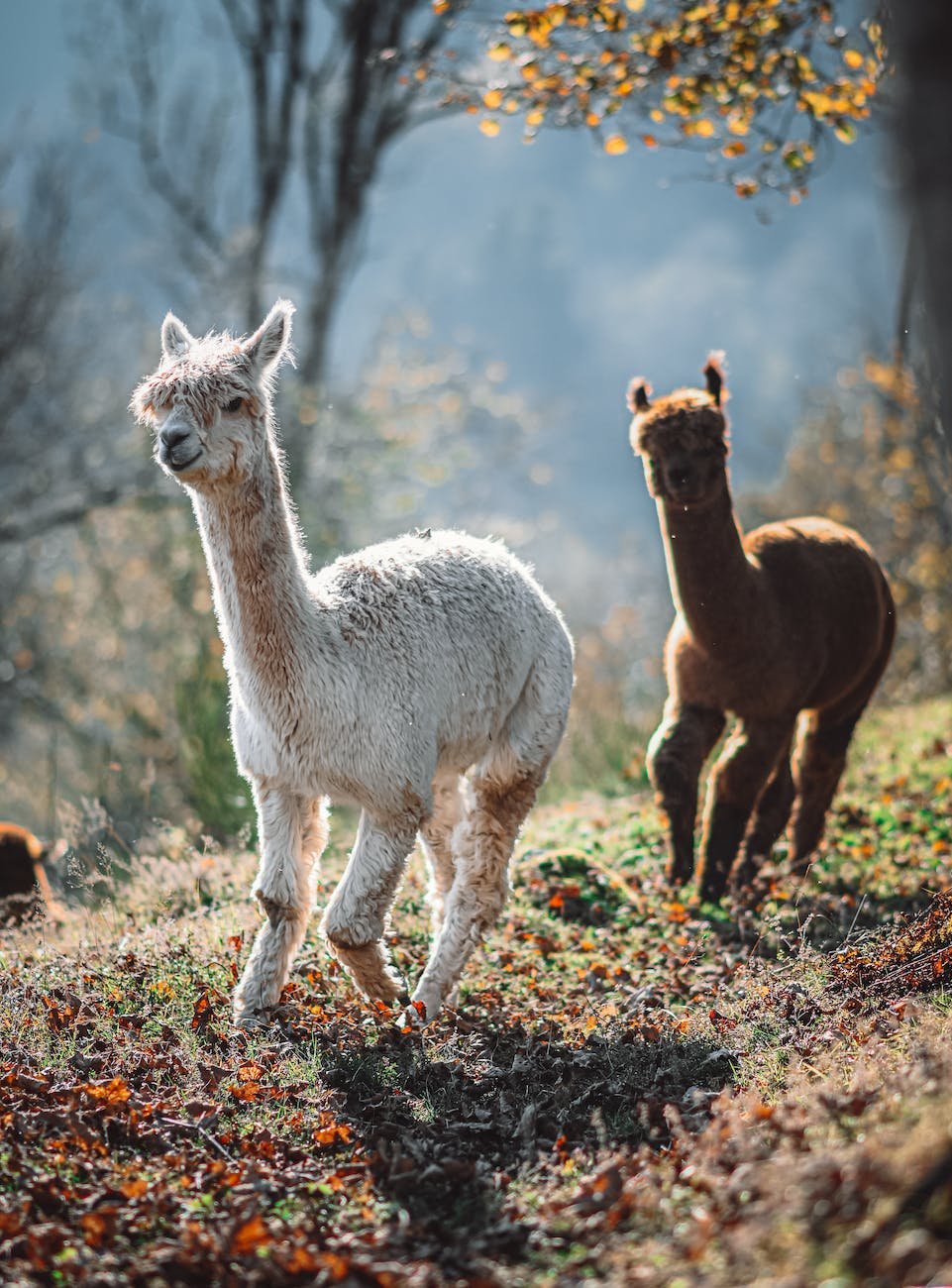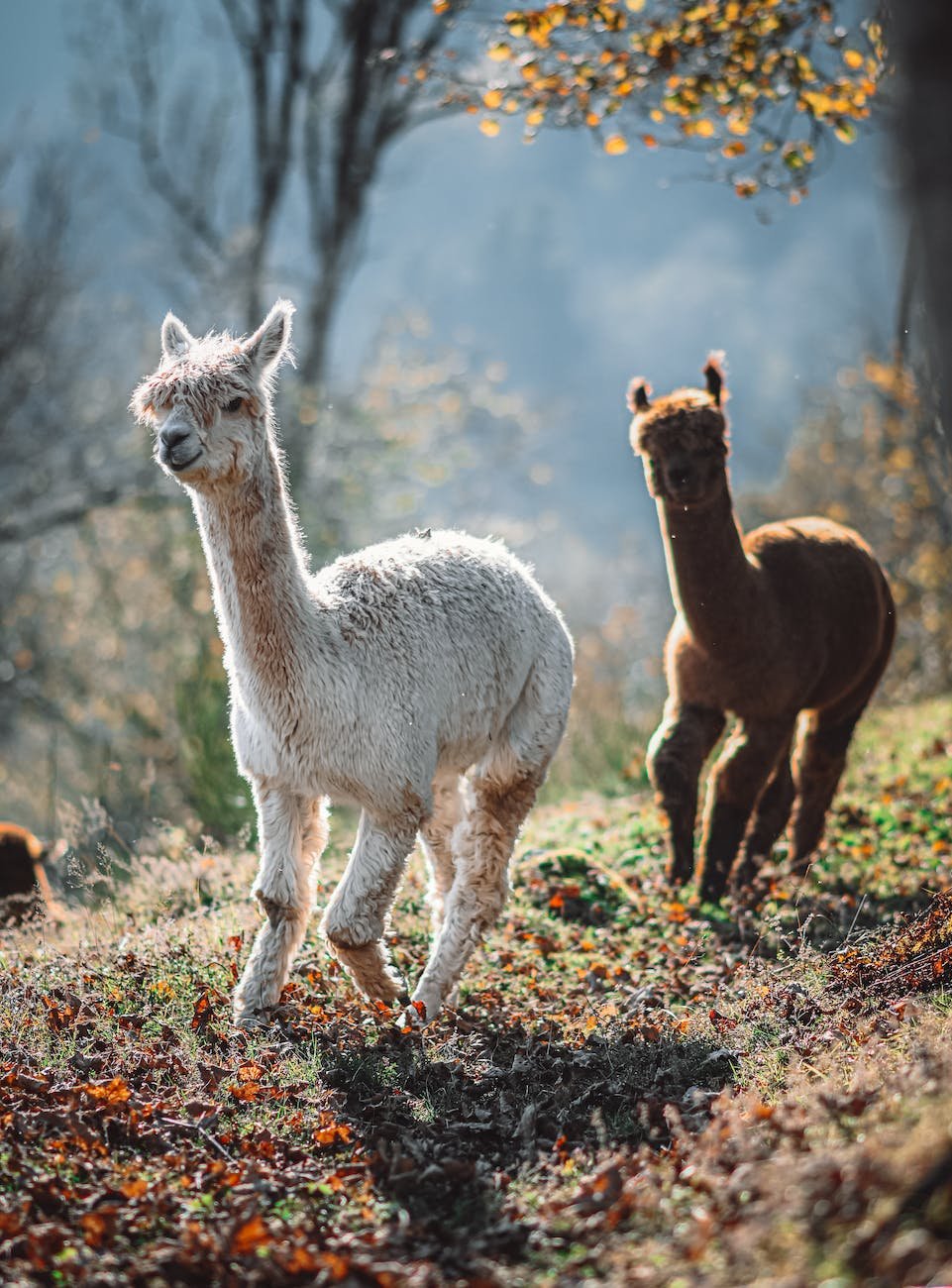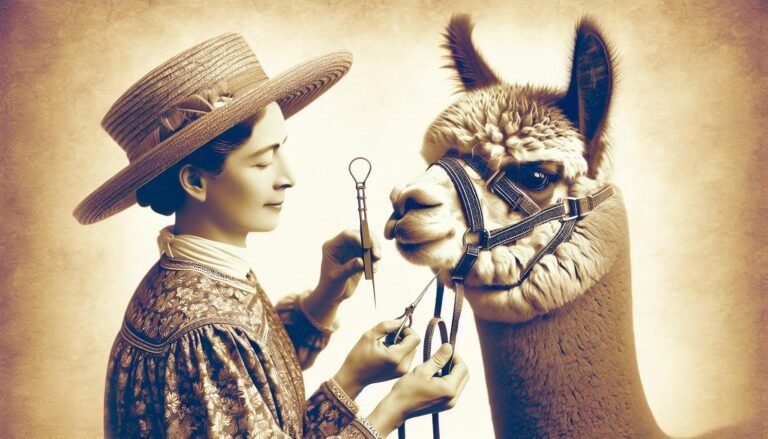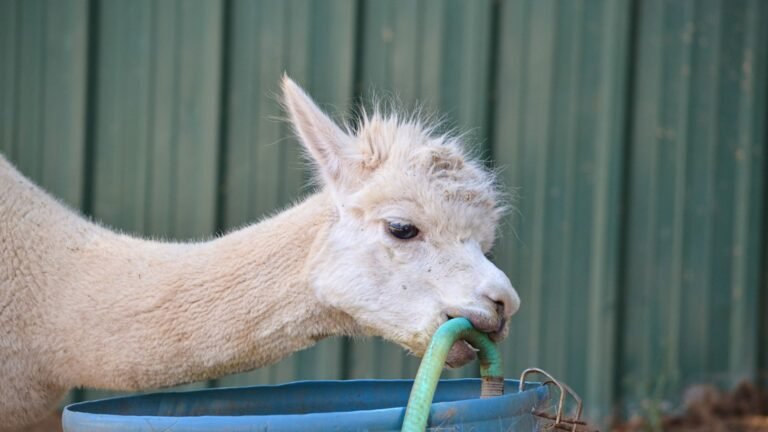Why Alpacas Thrive in Pairs: The Importance of Socialization for Healthy Alpacas
If you’re considering raising alpacas, you might be wondering, “Do alpacas need to be in pairs?” It’s a common question and one that’s crucial to understand for the wellbeing of these adorable creatures.
Alpacas are social animals, much like us humans. They thrive in groups and can become stressed or depressed when left alone. That’s why it’s generally recommended to keep them in pairs or larger groups.
In this article, we’ll delve deeper into the social needs of alpacas, why they prefer company, and what happens when they’re left alone. So if you’re planning on becoming an alpaca parent, you’ll want to stick around.
Key Takeaways
- Alpacas are social animals and thrive in groups. Separation or isolation could lead to stress and manifest in physical and behavioral changes.
- Their social behaviors aren’t just for companionship but are rooted in survival mechanisms.
- Keeping alpacas in pairs or larger groups is recommended to cultivate an environment that mimics their natural living conditions, reducing stress and promoting well-being.
- Pairing alpacas encourages learning, socialization, and crucial survival skills among the animals, optimizing their ability to adapt to various situations.
- Signs of stress in alpacas include physical symptoms (weight loss, hair loss, ulcers), behavioral changes (self-isolation), communication changes, and changes in eating habits.
- Isolation carries severe consequences for alpacas, from stress and depression to a lack of essential life skills usually learned in a herd environment. Providing social interaction for your alpaca, ideally within a herd, is vital for its well-being.
Why Alpacas are Social Animals
Before we embark on this voyage to discover why alpacas are such social creatures, it’s integral to note that alpacas are herd animals by nature. They aren’t just social; they need their herd to thrive.
In the wild, alpacas live in family groups consisting of a dominant male, females, and their young ones. There’s safety in numbers, and this deep-rooted instinct has been vital for the survival of the species.
Here is a breakdown of how social structure plays out in alpaca communities:
| Social Hierarchy | Role |
|---|---|
| Dominant Male | Leader, protector |
| Females | Core of the herd |
| Young ones | Most protected members |
Alpacas communicate through body language and vocalizations, and these interactions form a dynamic social fabric that is integral to their well-being. Notably, young alpacas also learn essential survival skills within a herd. Without the presence of their peers, young alpacas could miss out on vital life lessons.
Aside from survival, alpacas also enjoy the company of their kind; they eat, frolic, and even sleep together. They derive comfort and security from being part of a herd which reduces their stress and conforms to their essence as social animals.

It’s clear that the social instinct of alpacas isn’t just about companionship, but a deeply ingrained survival mechanism. At times, psychological issues may arise when alpacas are separated from their peers—signifying the necessity of their social nature.
While it’s recommended to keep alpacas in at least pairs, housing them in larger groups is closer to mimicking their natural living conditions. Hence, it’s safe to state that alpacas thrive in communal living, a fact that can’t be stressed enough. You wouldn’t just be keeping your alpaca company; you’d be gifting them a healthier, happier life.
The Benefits of Keeping Alpacas in Pairs
Diving deeper into the benefits of keeping alpacas in pairs, their social behaviors come into sharp focus. Alpacas are herd animals; thus, their social interactions play a crucial role in their survival and overall welfare. They’re not just passive members of the flock. On the contrary, each alpaca actively contributes to the group mechanics, lending insight into why keeping them in at least pairs yields positive results.
Pairing alpacas helps mitigate stress, a notable benefit that shouldn’t be overlooked. In the wild, alpacas rely on their herd for communal protection, tapping into the concept of ‘safety in numbers’. This inherent trait carries over even to domesticated alpacas. When in pairs, these creatures feel safer, helping reduce stress levels that might otherwise manifest through irregular eating patterns, weight loss, or other health complications.

Additionally, keeping alpacas in pairs fosters learning and socialization between the animals. Young alpacas learn essential life skills not only from their parents but also from their peers. Therefore, housing them in pairs ensures they pick up crucial survival skills, enhancing their ability to adapt to their surroundings and handle different situations.
In the table below, I’ve summarized the main benefits of keeping alpacas in pairs. These data points highlight why it’s not just a recommendation, but an essential practice for owners intending to provide an optimal living environment for their alpacas.
| Benefits of Pairing Alpacas | Explanation |
|---|---|
| Mitigates Stress | Alpacas feel safer and more secure, helping reduce stress levels. |
| Fosters Learning and Socialization | Young alpacas can pick up essential life skills and important behaviors from their peers. |
Remember, the goal is to mimic their natural living conditions as closely as we can. By keeping alpacas in pairs, we aim to create a harmonious environment that respects their inherent social behaviors while promoting their health and well-being. While having larger groups is ideal, at the very least, try to house your alpacas in pairs; they’ll certainly thank you for it in their own sweet, alpaca way.
The Importance of Group Living for Alpacas
Diving deeper into the question, “do alpacas need to be in pairs?”, it’s imperative that we understand the importance of group living for these wonderful creatures. Alpacas are naturally social animals and thrive in herd environments. This isn’t just about comradery, it’s about survival. Their instincts and behaviors are honed for group living which sets a premise for their psychological wellbeing.
Every alpaca owner must understand that these animals are not solitary by nature. Originating from the enigmatic Andean mountain ranges in South America, these woolly creatures adapted over centuries to live in close-knit communities, looking out for predators and feeding together, enhancing their prospects of survival.
Creating scenarios as close as possible to their natural environment is hence of paramount importance. In such imitated natural setups, alpacas play, communicate, groom one another, and exhibit a plethora of other social interactions that are key to their mental health. Simply put, their social behavior lies at the heart of their wellbeing.

You may wonder, does this mean I can’t own just a single alpaca? Technically, possible, but it’s far from the animal’s best interest. Single alpacas, without the constant companionship of their kind, can exhibit heightened stress levels and other behavioral issues. Some farmers have reported that solitary alpacas develop unhealthy habits such as overeating and pacing, essentially indicators of stress and discomfort.
Nurturing alpacas in paired or group settings helps to minimize these potential problems. The interactions between animals in a herd fulfill their natural need for socialization, leading to lower stress levels and happier, healthier alpacas.

On a practical note, housing alpacas in pairs makes a lot of sense, especially for those with limited space or resources. While it’s true that a larger herd would be more beneficial, two alpacas together can still give each other companionship, share warmth during chilly nights and interact effectively in their small social circle.
From the perspective of animal welfare, it becomes clear that group living holds high significance in maintaining the overall health and happiness of these beautiful creatures. Pairing up alpacas is indeed a positive step towards respecting their inherent social behaviors and fostering an environment conducive to their wellbeing.
Signs of Stress and Depression in Alpacas
Understanding the signs of stress and depression in alpacas is critical to their care. Stressed alpacas can exhibit a range of physical and behavioral symptoms that point towards their discomfort.
Physically stressed alpacas might experience weight loss, hair loss, or even ulcers. They may suffer from a condition known as agonal breathing, characterized by rapid, shallow breaths. Incorporating routine health checks is therefore crucial to spot these early signs and initiate appropriate medical intervention.
Behaviorally, alpacas showing signs of stress or depression tend to isolate themselves from the rest of the herd. Now, that’s a significant red flag given their social nature. An isolated alpaca, often found lingering at the farthest corners of the pen, screams distress.
Changes in Communication
Alpacas employ a combination of vocal, visual, and physical cues to communicate. Sounds like humming, clucking, and squealing, coupled with body postures, play a vital role in their interaction. When an alpaca feels stressed or depressed, these communication methods can alter noticeably. They might fall silent, their humming less frequent, or cluck nervously for hours. Any change in their typical communication pattern, therefore, needs an immediate investigation.
Appetite and Eating Disorders
Stressed alpacas might also experience changes in their eating habits. They either eat less or exhibit binge-eating tendencies. Dramatic shifts in food intake are telltale signs of stress. If you notice any abrupt eating disorders in your alpacas, it’s high time you contacted the vet.
It’s crucial to remember that any change in normal behavior warrants attention. Understanding these common signs of stress and depression in alpacas is paramount for their welfare. Remember, the sooner you identify stress indicators and seek veterinary assistance, the better chance of your alpaca overcoming the situation and bouncing back to its healthy, dynamic self.
The Consequences of Keeping Alpacas Alone
It’s no secret that alpacas are social animals. They’ve evolved to live in herds and rely heavily on the company of other alpacas for survival and general well-being. Isolating an alpaca from a herd setting can lead to dire consequences.
One of the most striking side effects of alpaca isolation is stress. Loneliness can lead to severe mental and physical stress which manifests in a variety of ways. Alpaca owners must be vigilant to signs of stress which can include:
- Physical symptoms: Weight loss, hair loss, or the development of ulcers
- Behavior changes: Self-isolation
- Communication changes: Altered vocalizations or body postures
- Eating habit changes: Eating less or binge-eating.
Marking these changes early will help you quickly address the problem before it escalates.
Depression is another serious issue often seen in isolated alpacas. It’s not uncommon for these creatures to lose interest in their surroundings and exhibit low energy levels if they don’t have regular contact with other alpacas. Some alpacas may even stop eating altogether if the situation isn’t remedied quickly.
Isolated alpacas are also at risk of not learning essential skills usually taught within herd settings. In wild settings, experienced alpacas teach younger ones skills for surviving and thriving. Solitary alpacas miss out on these vital lessons.
Our understanding of the impact that isolation has on alpacas continues to grow. To do right by these charming creatures, consider their natural need for companionship and aim to mirror their natural herd environment as closely as possible in captivity. Whether it’s a paired or group setting, providing social interaction is instrumental in maintaining your alpaca’s health and happiness.








One Comment
Our picks
Alpaca & Wool Felted Sole Inserts: Comfy Upgrade?
Best Alpaca Socks for Hiking: Ultimate Comfort and Durability on Trails
Best Alpaca Halter for Comfort and Control